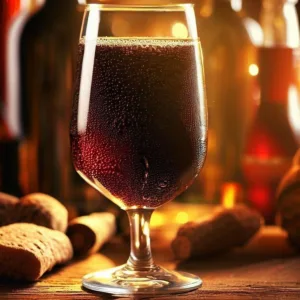Welcome to our comprehensive guide on Chianti wine, famously known as „Chianti bor” in Hungarian. As wine enthusiasts, we understand the allure of this iconic Italian wine and its rich history. In this article, we’ll take you on a journey through the captivating world of Chianti bor, exploring its origins, characteristics, production methods, and more. If you’re curious to learn more about this renowned wine, sit back, pour yourself a glass of Chianti, and let’s dive in.
The origins of chianti wine
The origins of Chianti bor can be traced back to the stunning landscapes of Tuscany, Italy. This wine region boasts a history that spans centuries, and Chianti is undoubtedly one of its crown jewels. The picturesque vineyards, rolling hills, and charming villages of Chianti create the perfect backdrop for producing exceptional wines.
Historical Significance
Chianti’s wine-making tradition dates back to the Roman era, but it was during the Middle Ages that the true potential of this region’s grapes was recognized. The earliest documented mention of Chianti as a wine-producing area dates back to the 13th century, highlighting its enduring legacy.
The Chianti Classico Region
Within the larger Chianti wine-producing area, there is a sub-region known as Chianti Classico. This area is revered for its premium-quality wines and strict production regulations. Wines labeled as Chianti Classico are made from Sangiovese grapes and adhere to specific guidelines to ensure their authenticity and exceptional flavor profile.
Distinct characteristics of chianti bor
Chianti bor is characterized by its unique flavor profile, which is a result of the region’s climate, soil composition, and grape varieties. The primary grape used in Chianti production is Sangiovese, known for its bright acidity, red fruit flavors, and ability to age gracefully. These characteristics contribute to Chianti’s versatility, making it a wonderful accompaniment to a wide range of dishes.
Flavor Profile
When you indulge in a glass of Chianti bor, you’ll be greeted with notes of cherry, plum, and sometimes a hint of earthiness. The wine’s vibrant acidity adds a refreshing zing to the palate, making it an excellent choice for pairing with rich and savory foods.
Aging Potential
Chianti wines, especially those labeled as Riserva, have impressive aging potential. The structured tannins and well-balanced acidity contribute to the wine’s ability to develop complexity over time. With proper cellaring, Chianti bor can transform into an elegant and refined masterpiece.
The art of chianti production
Producing Chianti bor is a meticulous process that combines tradition with modern techniques. The winemakers in the Chianti region adhere to strict guidelines to ensure the quality and authenticity of the wines they produce.
Vineyard Practices
The vineyards in Chianti are carefully managed to optimize grape quality. The region’s unique terroir, characterized by clay and limestone-rich soils, plays a crucial role in shaping the grapes’ flavor profile. Sustainable farming practices are often employed to maintain the health of the vines and the surrounding ecosystem.
Winemaking Techniques
After harvesting, the grapes are gently pressed, and the fermentation process begins. The use of oak barrels for aging varies among producers, leading to a diverse range of Chianti styles. Some wines are aged in traditional large oak casks, while others embrace smaller barrels for a touch of oak influence.
Exploring chianti: pairing and enjoyment
Chianti bor’s versatility extends to its pairing possibilities. Whether you’re enjoying a casual meal or indulging in a special occasion, Chianti complements a variety of dishes.
Food Pairing
The wine’s acidity and moderate tannins make it an excellent companion for Italian cuisine. Pasta dishes, grilled meats, aged cheeses, and even pizza find a perfect match in Chianti bor. The wine’s fruit-forwardness adds a delightful contrast to savory flavors, enhancing the overall dining experience.
Serving Temperature
To fully appreciate the nuances of Chianti bor, it’s essential to serve it at the right temperature. Slightly chilled, around 60-65°F (15-18°C), Chianti’s flavors will shine, and its aromas will be at their most expressive.
Frequently Asked Questions (FAQs)
Q: What is the aging potential of Chianti bor?
A: Chianti bor, especially the Riserva wines, can age gracefully for several years. Properly stored bottles can develop more complexity and depth over time.
Q: Is Chianti only made from Sangiovese grapes?
A: While Sangiovese is the primary grape used, Chianti wines can also include other approved grape varieties in their blends, such as Canaiolo and Colorino.
Q: What sets Chianti Classico apart from other Chianti wines?
A: Chianti Classico wines are exclusively produced in the historic heart of the Chianti region and adhere to stricter production regulations, resulting in wines of exceptional quality and authenticity.
As we conclude our journey through the captivating world of Chianti bor, we hope you’ve gained a deeper appreciation for this iconic Italian wine. Its rich history, distinct characteristics, and exceptional versatility make Chianti a true treasure in the world of viticulture. So, whether you’re a seasoned wine enthusiast or just beginning to explore the realm of wine, Chianti bor is an experience that should not be missed.
Vezi și:






